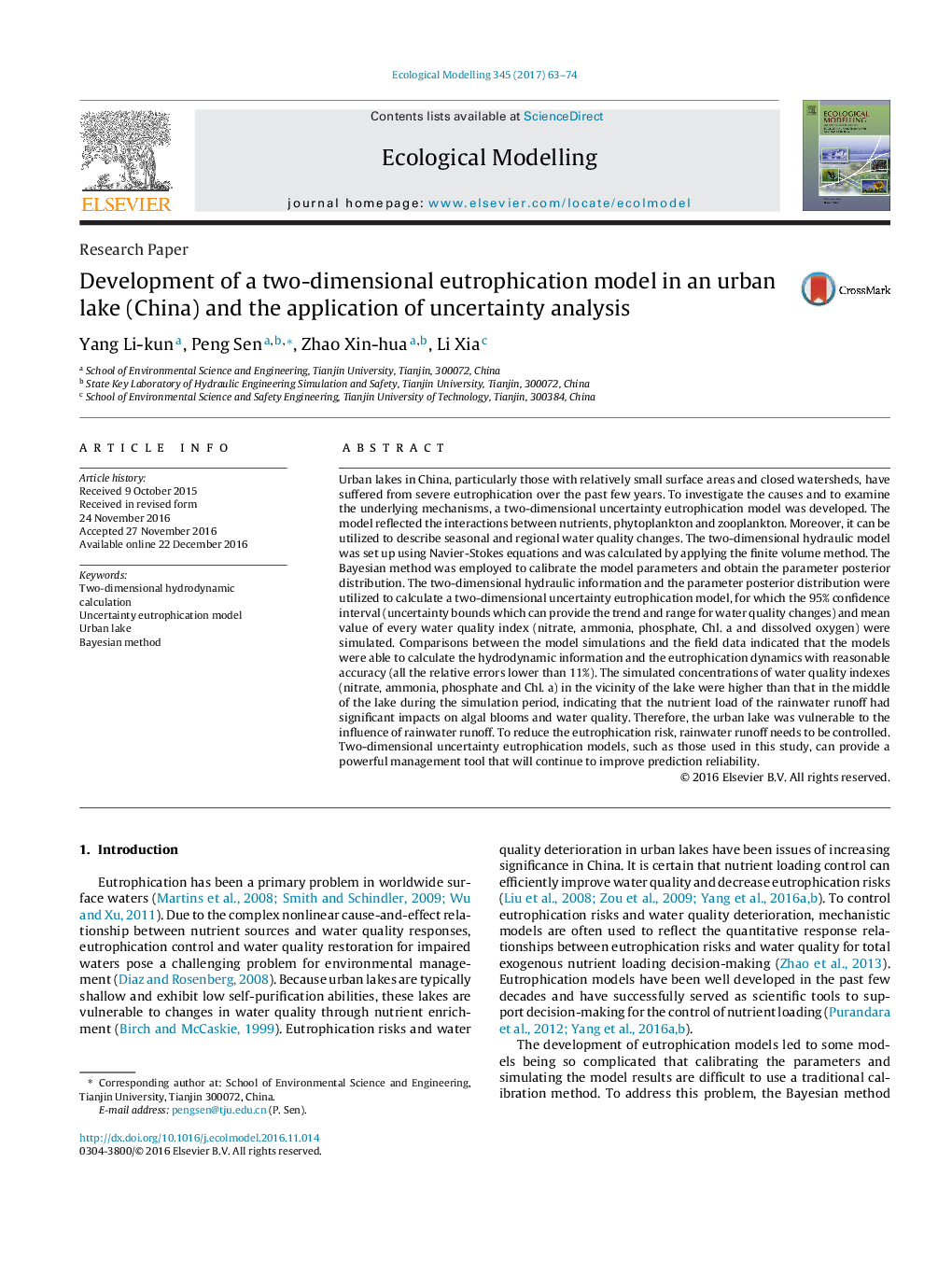| Article ID | Journal | Published Year | Pages | File Type |
|---|---|---|---|---|
| 5742263 | Ecological Modelling | 2017 | 12 Pages |
â¢A two-dimensional uncertain eutrophication model was used to model urban lake.â¢The developed model could accurately simulate the eutrophication dynamics.â¢A model-based analysis was conducted for evaluation of urban lake water quality.â¢The loading scenario was setup by use of the actual situation.
Urban lakes in China, particularly those with relatively small surface areas and closed watersheds, have suffered from severe eutrophication over the past few years. To investigate the causes and to examine the underlying mechanisms, a two-dimensional uncertainty eutrophication model was developed. The model reflected the interactions between nutrients, phytoplankton and zooplankton. Moreover, it can be utilized to describe seasonal and regional water quality changes. The two-dimensional hydraulic model was set up using Navier-Stokes equations and was calculated by applying the finite volume method. The Bayesian method was employed to calibrate the model parameters and obtain the parameter posterior distribution. The two-dimensional hydraulic information and the parameter posterior distribution were utilized to calculate a two-dimensional uncertainty eutrophication model, for which the 95% confidence interval (uncertainty bounds which can provide the trend and range for water quality changes) and mean value of every water quality index (nitrate, ammonia, phosphate, Chl. a and dissolved oxygen) were simulated. Comparisons between the model simulations and the field data indicated that the models were able to calculate the hydrodynamic information and the eutrophication dynamics with reasonable accuracy (all the relative errors lower than 11%). The simulated concentrations of water quality indexes (nitrate, ammonia, phosphate and Chl. a) in the vicinity of the lake were higher than that in the middle of the lake during the simulation period, indicating that the nutrient load of the rainwater runoff had significant impacts on algal blooms and water quality. Therefore, the urban lake was vulnerable to the influence of rainwater runoff. To reduce the eutrophication risk, rainwater runoff needs to be controlled. Two-dimensional uncertainty eutrophication models, such as those used in this study, can provide a powerful management tool that will continue to improve prediction reliability.
Graphical abstractDownload high-res image (228KB)Download full-size image
